Ever wondered about the strength of balsa wood, that lightweight wonder? Buckle up! We’re diving into the fascinating world of balsa’s strength and where it truly shines. Ready to uncover its secrets?
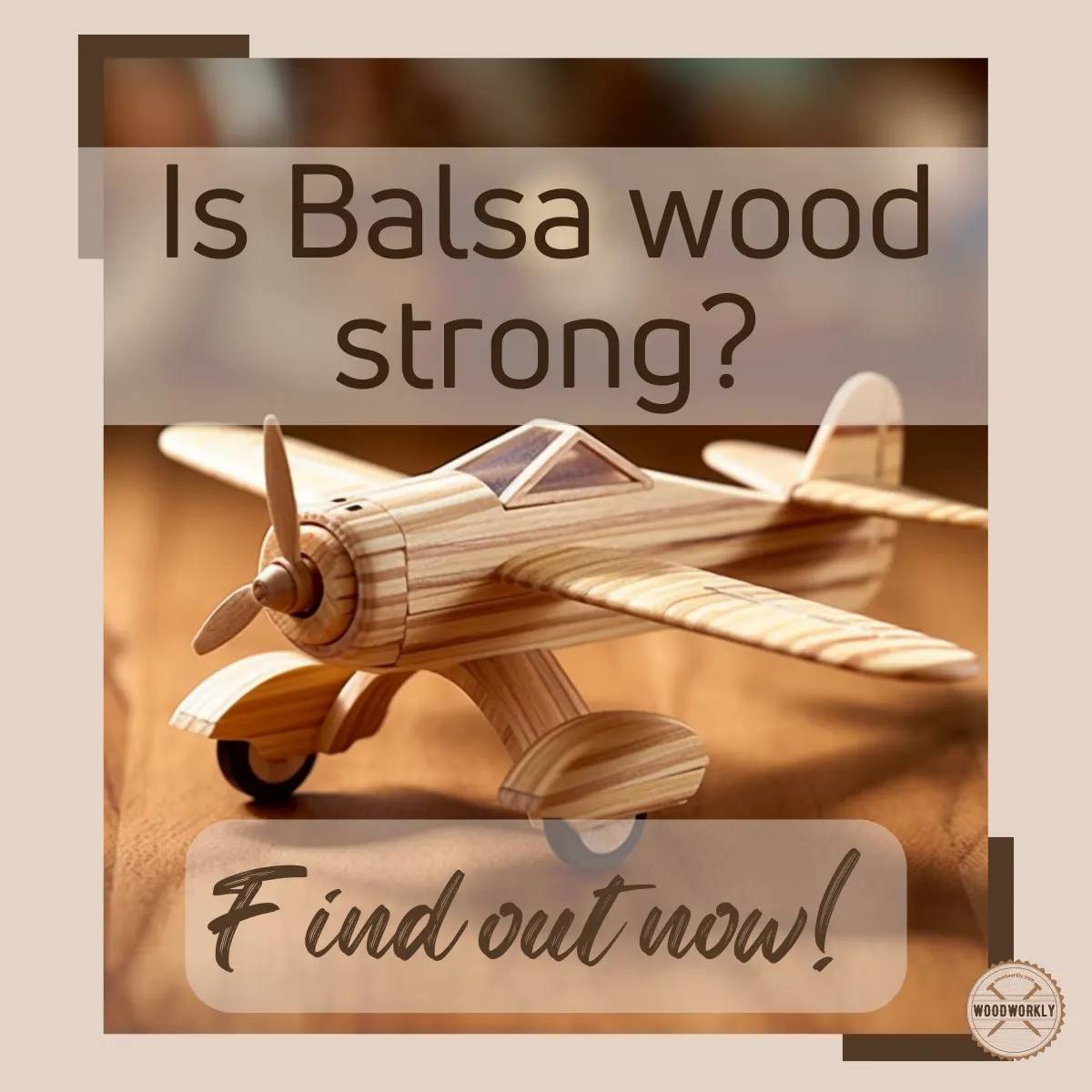
Balsa wood is considered one of the lightest wood types on the planet. It has a unique heartwood color that turns into a pale reddish-brown and sapwood color over time.
Balsa is a durable wood that can use for both indoor and outdoor woodworking projects.
When I was working with Balsa wood, I always wondered about its strength.
I did a deep research about this cool wood and was able to find out lots of useful info about its strength.
So, let’s find out, Is Balsa wood strong?
Yes, balsa wood has strength, especially considering its lightweight nature. However, compared to many other types of wood, its overall strength is relatively low, which limits its use in weight-bearing applications. Its unique strength-to-weight ratio makes it ideal for specific uses, like model-making and sandwich panels.
But according to the experts, Balsa wood is strong in terms of its weight.

So, there’s a lot more to know about the strength of Balsa wood to get the best out of it.
So, in this article, I’ll walk through, Is Balsa Wood Strong?, the strength of Balsa wood in tension or compression, and the strength of Balsa wood for common uses.
Furthermore, I’ll answer some frequently asked questions as well.
Let’s jump in!
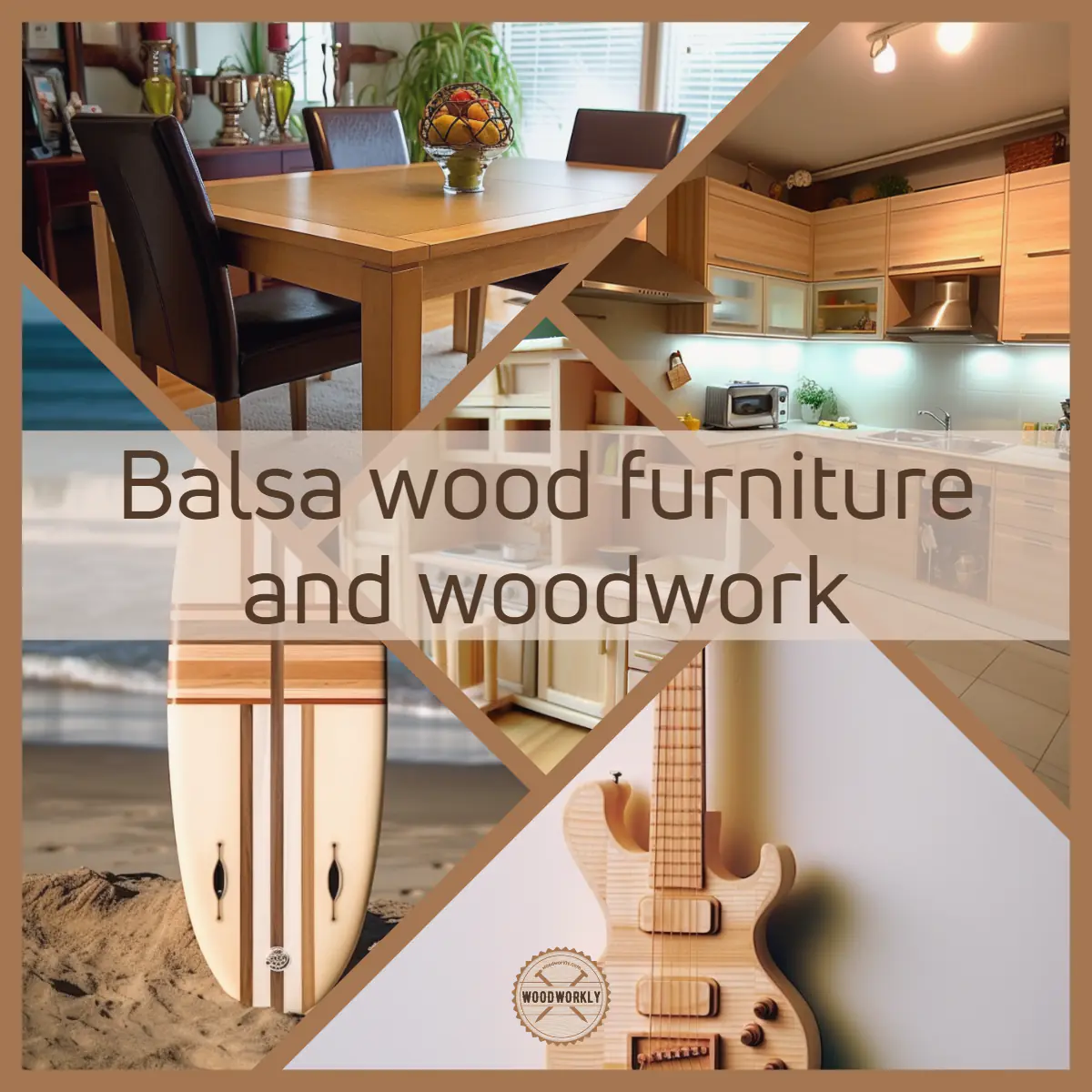
First of all, let’s get a brief knowledge about balsa wood with its useful characteristics.
What Kind of Wood is Balsa?
In the heart of the dense jungles of Central and South America, specifically in Ecuador, 90% of all balsa wood is found.
Balsa trees thrive in these rainforests, exhibiting a remarkable regrowth rate of 6 to 10 years, making them a sustainable resource.
Unlike many commercial tree species, balsa trees are not typically farmed but rather harvested directly from the wild.
Balsa’s Unique Features
Despite being incredibly lightweight, balsa is categorized as a hardwood. This might seem counterintuitive as we often associate hardwood with durability and weight.
However, the classification of hardwood and softwood is not based on strength or weight but on the type of seeds, a tree produces.
Balsa trees produce seeds enclosed in a covering, qualifying it as a hardwood.
Interestingly, balsa wood’s cells are quite large, with thin cell walls, creating a structure that is primarily empty space.
This unique cellular composition contributes to its remarkably lightweight, sometimes even referred to as having almost no density.

Strength-to-Weight Ratio
An exceptional quality of balsa wood is its strength-to-weight ratio.
Despite being one of the lightest woods, it showcases strength that rivals certain hardwoods like oak and softwoods like pine when considering its weight.
This is a testament to the phrase, “size isn’t everything,” proving that even the lightest wood can hold its own in the strength department.
Uses of Balsa Wood
Its lightness, coupled with its unique strength-to-weight ratio, makes balsa wood particularly suitable for specific applications.
Remember those fond childhood memories of building model airplanes? Balsa wood was your likely companion, being the star material in model-making due to its workability and light weight.
Furthermore, balsa’s lightness and stiffness make it an ideal core material for sandwich panels used in various structural applications, from bridge decks to ping pong paddles, and even wind turbine blades.
In Spanish, the term “balsa” translates to “raft” or “float”, reflecting another of its uses in floatation devices.
Balsa Wood in Comparison
When compared to other woods like basswood, balsa is lighter, less dense, and easier to cut and sand.
However, it is less durable and more prone to cracking and warping.
On the other hand, basswood, being denser and harder, is less susceptible to moisture absorption and is especially suitable for carving.

How Strong Is Balsa Wood?
Even though Balsa wood is considered a hardwood, it is weaker than most hardwoods and softwoods as well.
But the strength is having can be applied to many woodworking projects. The strength of Balsa wood depends on the following factors.
They are,
- Compressive strength
- Bending strength
- Hardness
- Density
- Stiffness
So, let’s have a look at the calculated values of the above factors to get an idea of how strong Balsa wood is,
| Compressive strength | 145 psi (1.00 Mpa) |
| Bending strength | 2,550 psi – 3,170 psi (370 ksi – 460 ksi) |
| Hardness | 67 lbf (300 N) |
| Density | 0.16 |
As you can see compressive strength and bending strength of Balsa wood are significantly less.
This is the main reason for its poor strength and poor durability. The density of the wood itself is also pretty low.
Therefore, Balsa wood is considered the lightest wood in the commercial market.
The compressive strength of Balsa wood increases linearly up to 10 Mpa with density.
Even though Balsa wood has less compressive and bending strengths, the mechanical properties of Balsa wood are high due to the sandwich panels.
When we look at the cellular structure of Balsa wood in terms of its strength, it consists of 75% of fibers, 20% rays, and 5% vessels.
Those vessels are long and placed axially along the trunk of the tree. The crystalline structure of cellulose fibers increases the mechanical strength of the wood.
Ultimately Balsa wood is well strong for its weight. Sometimes the wood is 6lb per cubic footlight.
The compressive strength is poor sideways, but when it comes to the middle area, compressive strength will increase significantly.

Is Balsa Wood Stronger in Tension or Compression?
Balsa wood is 30% stronger in tension than compression. As a general rule, heavier wood is stronger in compression and lighter wood is stronger in tension under the same cross-sectional area.
Therefore, Balsa wood is strong in tension.
Balsa wood has a good resistance against shear force along the wood grain than parallel to the wood grain.
It is a composite like carbon fiber that has embedded fibers in cellulose structure. The cellulose fibers are so strong in tension but not in compression.
How much force can balsa wood take?
Balsa wood’s strength is directly influenced by its density.
Despite being classified as a hardwood, it exhibits lower strength than many other hardwoods and even some softwoods.
The hardness of balsa wood is approximately 67 lbf (300 N), while its bending strength ranges between 2,550 psi to 3,170 psi.
The compressive strength of balsa wood, which is the measure of the largest compressive force it can withstand, is about 145 psi.
However, these are just the numbers. What do they mean in practical terms?

Practical Implications of Balsa Wood’s Strength
To put it into perspective, you wouldn’t want to use balsa wood to construct heavy furniture or shelving.
On its own, balsa wood won’t support a significant amount of weight across a span.
Yet, it might surprise you to learn that balsa wood is commonly used in structural applications due to its strength-to-weight ratio.
For instance, it’s often used as core material in sandwich panels for bridge decks and even ping pong paddles.
This is because, although balsa wood isn’t particularly strong on its own, its lightness combined with its relative strength makes it an ideal candidate for such uses.
Amplifying Balsa Wood’s Strength
While balsa wood might not be the strongest wood on its own, its strength can be enhanced by combining it with other materials.
For example, sandwich panels made with balsa wood as the core can greatly improve the overall mechanical strength of the structure.
Likewise, in model making, balsa wood is often laminated with glass-reinforced plastic for added durability.
This ensures the model isn’t subjected to excessive pressure or stress, extending its life despite the relatively soft and fragile nature of the balsa wood itself.
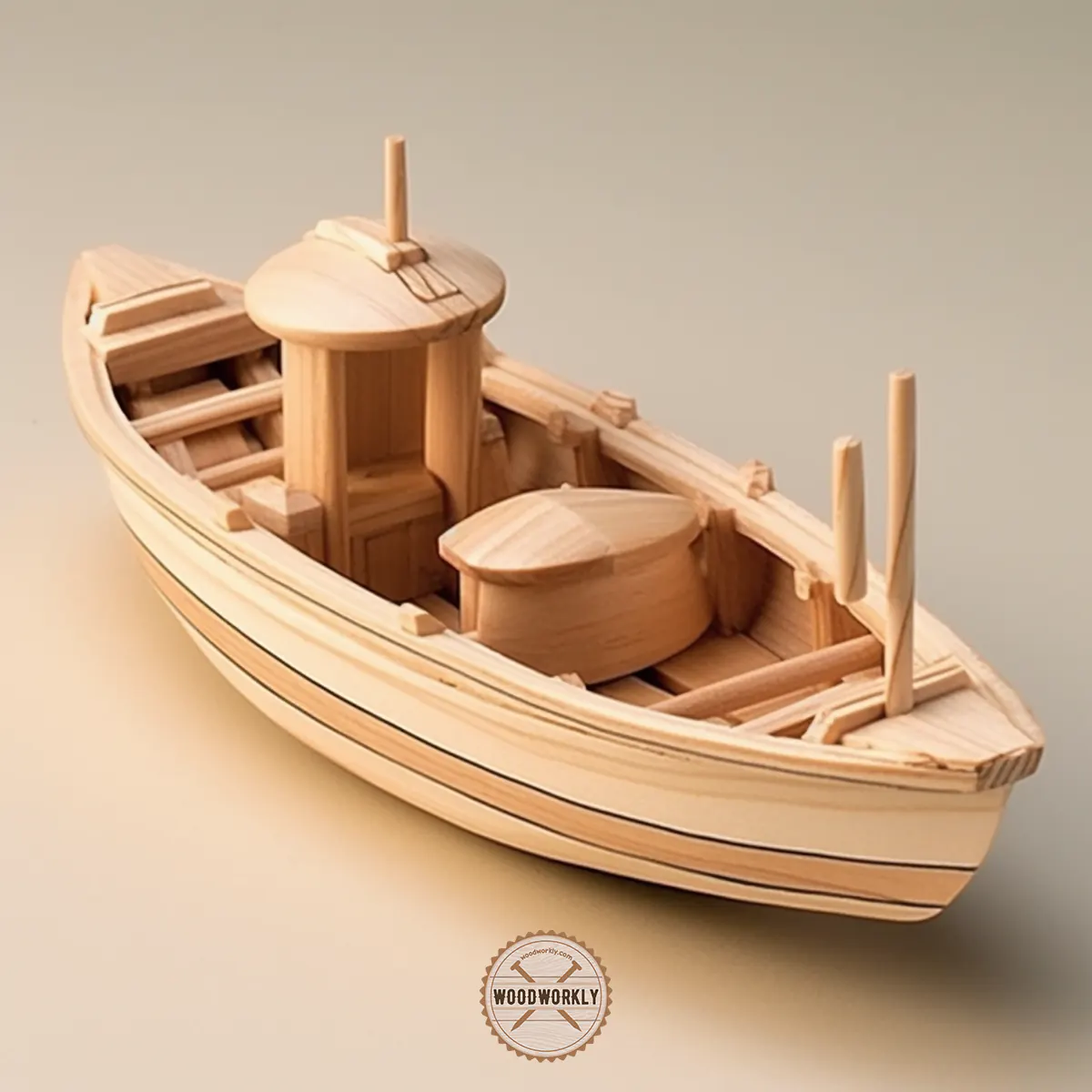
Balsa Wood’s Strength in Perspective
Despite its low compressive and bending strengths, the robustness of balsa wood is actually quite remarkable for its light weight.
For instance, balsa wood can handle more force when compressed along the grain compared to when pressure is applied perpendicularly.
Does balsa wood snap easily?
Yes, Balsa wood does have the potential to snap easily, especially when compared to denser woods.
When we think about whether wood snaps easily, we’re considering its tensile strength, or the force required to pull something such as a bar of material, a length of rope, or in this case, a piece of wood, to the point where it breaks.
Balsa wood’s tensile strength is surprisingly high for its weight, making it an excellent material for specific applications.
However, it’s not as high as some other types of wood.
The Grain Matters
The direction of the wood grain also plays a crucial role in determining whether balsa wood snaps easily.
Like all woods, balsa wood is stronger along its grain.
That means a piece of balsa wood is less likely to break when force is applied lengthwise, following the direction of the wood fibers.
On the other hand, if pressure is applied perpendicular to the grain, the wood is more likely to snap.
Handling Balsa Wood
Despite its impressive strength-to-weight ratio, balsa wood can indeed snap or crack if mishandled.
Its lightweight nature means it’s less dense and therefore can be more fragile.
Rough handling or dropping can cause it to crack or break, especially when it’s in thinner sheets.
Practical Application in Model Making
In model making, for example, you may find that balsa wood can snap or crack if too much pressure is applied or if it’s bent too sharply.
It’s one of the reasons why balsa models, like model airplanes, are often reinforced with materials like glass-reinforced plastic.
However, with proper handling and care, a balsa model can last for a long time.
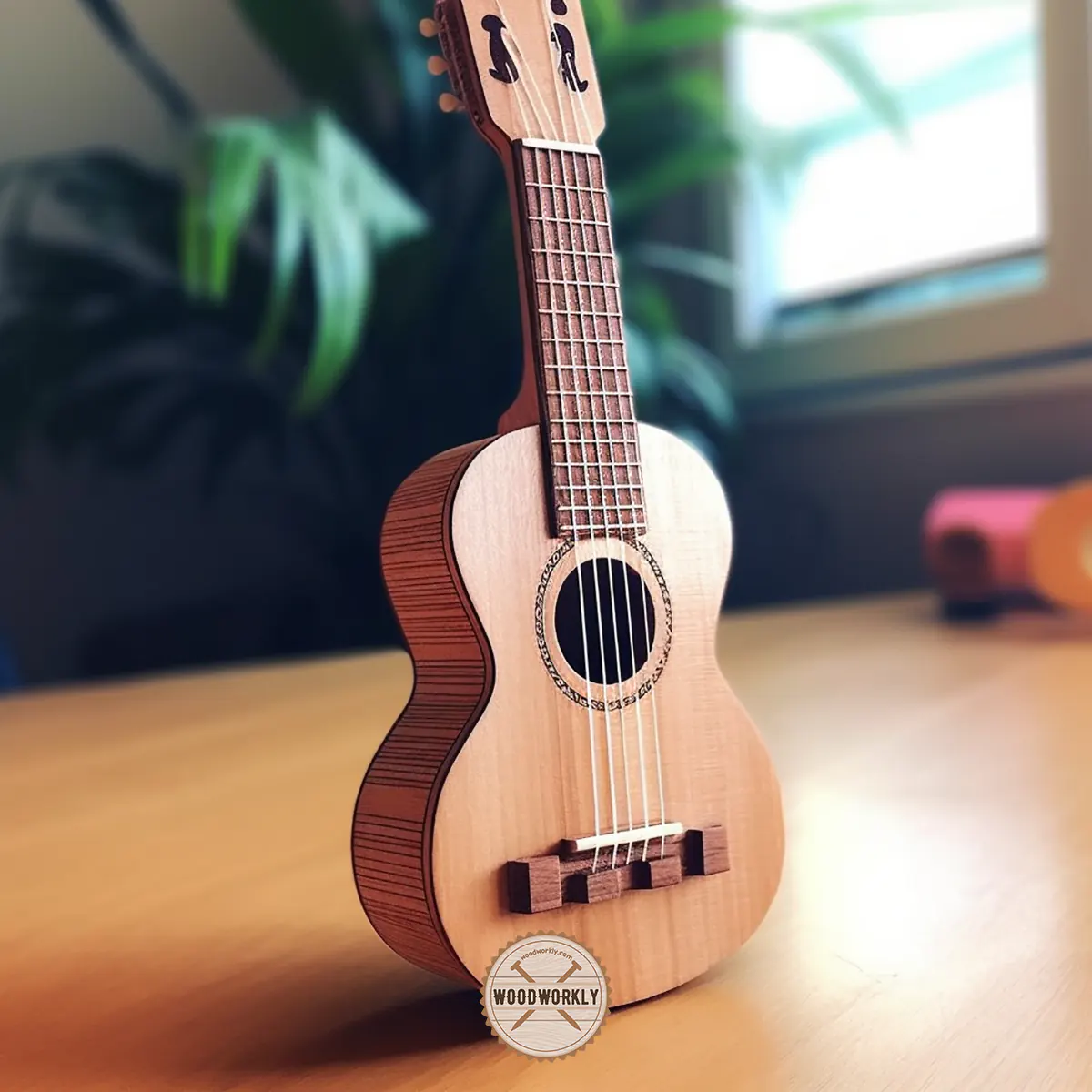
How Strong Is Balsa For Different Applications
Let’s talk about how strong is mahogany when it comes to making indoor and outdoor furniture, model making, and carving projects.
Is Balsa Wood Strong for Furniture?
Balsa wood is not strong enough for the furniture that we use most. It is good only for furniture that use for decorative purposes.
Furniture that is made from Balsa wood is light and filmmakers use chairs and tables made from Balsa wood to break while minimizing the damage.
Designers use Balsa wood as furniture material by lauding its sustainability as a fast-growing tree with aesthetic great properties.
Here’re the advantages you’ll get by using Balsa wood for furniture,
- Balsa wood furniture is light, soft, and buoyant
- Perfect for model building
- Affordable
- Easy to cut, handle and render
- Strong because of having a high water content
Here’re some pros and cons of Balsa wood to get an idea about is Balsa wood strong.
| Pros | Cons |
| Lightweight | Less strong |
| High tensile strength | No water resistance |
| Great for model making | Highly flammable |
| High workability | Poor durability |
| Hardwood | Crack easily |
As you can see, in terms of strength, Balsa wood has poor qualities.
Therefore, I recommend you use Balsa wood only for small woodworking projects that keep indoors and make sure not to apply high force against furniture that is made of Balsa wood because it cannot bear loads like other hardwoods.

Is Balsa Wood Strong for Carving?
Yes, Balsa wood is strong enough for carving. Balsa wood is great for beginners because it’s soft and easy to carve with woodworking tools.
It is easy to learn many new things about carving with Balsa wood because of its exceptional qualities and strength.
Even though the compressive strength and bending strength of Balsa wood are poor, it has good tensile strength.
Therefore, it is soft and easy to make cuts and shapes. You can make carvings and sculptures with high details due to Balsa wood’s great carving and whittling qualities.
But when you’re carving with Balsa wood, make sure to carve simple projects because Balsa wood does not have much strength to hold carves with fine details.
Also, make sure to use sharp tools because the wood tends to crack so easily.

Is Balsa Wood Strong for Model Making?
Balsa wood is great for model making because it is so light and easy to cut and shape with a craft knife with a decent amount of strength.
For example, here are some models that are mostly made from Balsa wood.
- Model airplanes
- Musical instruments
- Boats
- Rafts
- Packaging models
- Surfboards
- Blades of wind turbines
After making models with Balsa wood, mostly they’ll get laminated with glass-reinforced plastic.
Even though we normally consider Balsa wood is weak in strength, it is exceptional in terms of weight-to-strength ratio.
This is why it has been a really good material in model making. For models, the strength of Balsa wood is well enough to live for a long time.
Models made of Balsa wood can live long until they’re not faced with high pressure or stress. Because Balsa wood is soft and fragile.
It will easily break or get cracks on the surface under pressure.
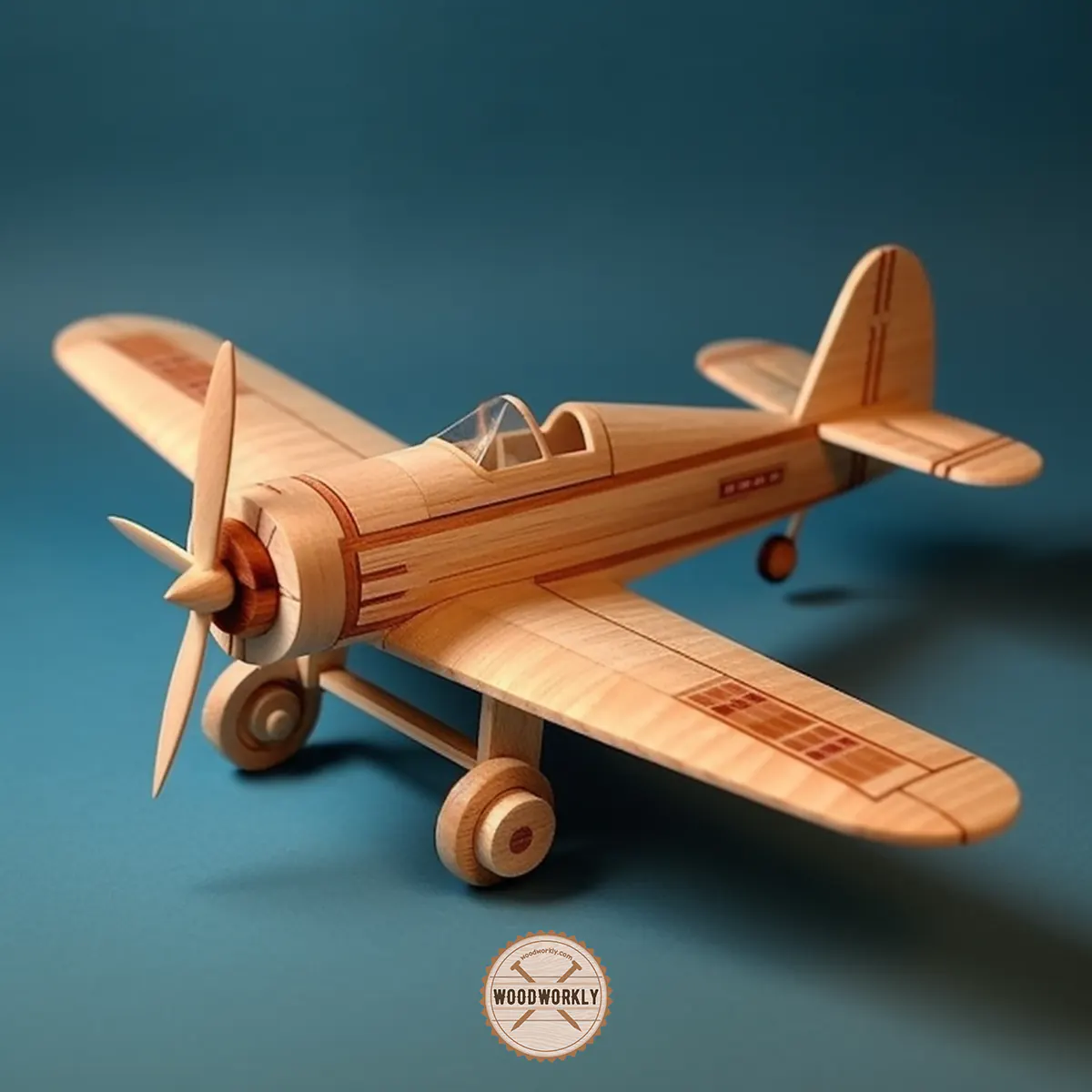
How Hard Is Balsa Wood?
Even though Balsa wood is considered hardwood because of its cellulose structure, it is lighter, softer, and weaker than many hardwoods and softwoods as well.
In terms of hardness, Balsa wood ranks way below most other types of wood with a 300 rating for the Janka Hardness test value.
Janka hardness test is a standard technique that is used to measure the hardness of any wood according to its resistance to wear and tear.
Woods with high wear and dent resistance, score higher ratings on the Janka hardness rating scale.
Here’re the Janka hardness ratings of the most popular wood types.
From this scale, you can get a clear idea about the strength of Balsa wood compared to other wood types.
| Wood species | Hardness value |
| Brazilian Walnut | 3,684 lbf (16,390 N) |
| Red Mahogany, Turpentine | 2,697 lbf (12,000 N) |
| Brazilian Cherry, Jatoba | 2,350 lbf (10,500 N) |
| Golden Teak | 2,330 lbf (10,400 N) |
| Hickory, Pecan, Satinwood | 1,820 lbf (8,100 N) |
| Hard Maple, Sugar Maple | 1,450 lbf (6,400 N) |
| White Oak | 1,360 lbf (6,000 N) |
| Ash (White) | 1,320 lbf (5,900 N) |
| American Beech | 1,300 lbf (5,800 N) |
| Red Oak (Northern) | 1,290 lbf (5,700 N) |
| Yellow Birch / Baltic birch | 1,260 lbf (5,600 N) |
| Teak | 1,155 lbf (5,140 N) |
| Black Walnut, North American Walnut | 1,010 lbf (4,500 N) |
| Cherry | 995 lbf (4,430 N) |
| Black Cherry, Imbuia | 950 lbf (4,200 N) |
| Red Maple | 950 lbf (4,200 N) |
| Douglas Fir | 710 lbf (3,158 N) |
| Silver Maple | 700 lbf (3,100 N) |
| Redwood | 420 lbf (1,868 N) |
| Engelmann Spruce | 390 lbf (1,735 N) |
| Sugar Pine | 380 lbf (1,690 N) |
| Red Cedar | 350 lbf (1,557 N) |
| White Cedar | 320 lbf (1,423 N) |
| Balsa Wood | 67 lbf (300 N) |
As you can see how soft Balsa is wood.it is the softest wood on the planet. Its hardness value is significantly lower than all the woods that we use in our day-to-day lives.
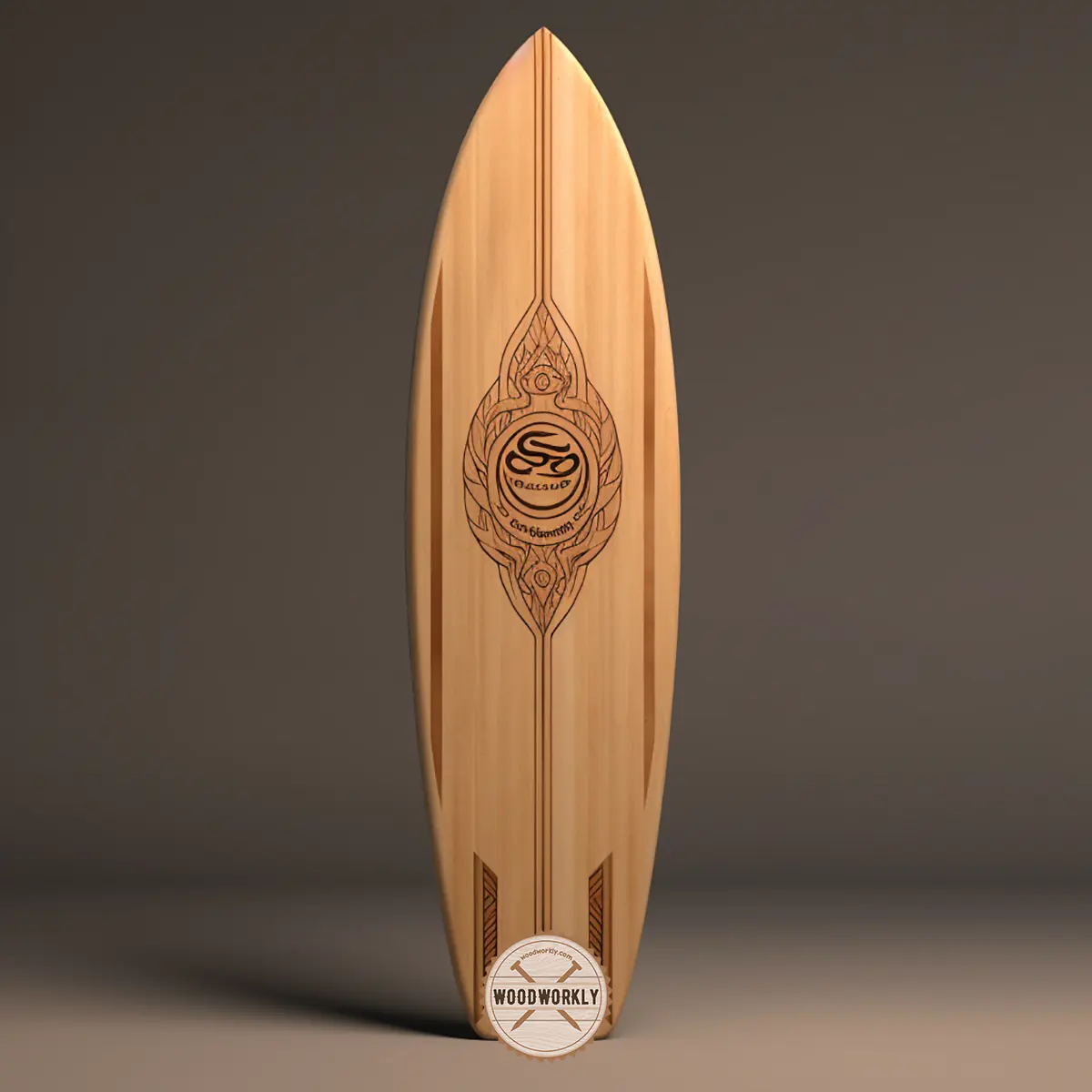
Is Balsa Wood Expensive?
When compared to many other types of common woodworking lumber, balsa wood can indeed seem to be on the pricier side.
A sheet of balsa wood might run you about $15 per square foot at a hobby shop, compared to a wider and longer plank of pine that may cost around $14.88 for a 6’ length.
However, this can be somewhat misleading as the applications for each type of wood can be quite different.
Balsa is more often used in specialized applications, such as model building or as a core material in sandwich structures, while pine is a common choice for general construction and carpentry.
Despite its cost, many hobbyists and professionals find balsa wood to be worth the investment.
Its light weight, ease of use, and strength-to-weight ratio make it ideal for a wide range of projects, from model airplanes and wind turbine blades to sandwich panels in bridge decks.
So, let’s find out the strength of balsa wood compared to other popular wood types.
What wood is stronger than balsa wood?
Here’re the wood types that are stronger than balsa wood,
- Oakwood
- Teak wood
- Baltic pine
- Basswood
Is Balsa Wood Stronger Than Basswood?
Basswood is stronger than Balsa wood. but Balsa wood has a better strength-to-weight ratio than basswood.
Balsa wood is lightweight and used for airplane model making and boat making, plus it is perfect for carving as well.
According to the measurements, the compressive strength and bending strength of basswood and Balsa wood are given below.
| Wood Type | Compressive Strength | Bending Strength |
| Balsa wood | 145 psi | 2,550 psi – 3,170 psi |
| Basswood | 4, 730 psi | 8, 700 psi |
As you can see basswood is significantly stronger than Balsa wood.
But no wood can compete with Balsa wood in terms of strength-to-weight ratio which is pretty much important in small woodworking projects.
That’s what makes Balsa wood so special.
That’s it, folks! Hope you were able to know all you wanted to know about, is balsa wood strong with its characteristics.

So, let’s answer some frequently asked questions as well.
FAQs
Can balsa wood support a lot of weight?
While balsa wood is surprisingly strong given its lightness, its ability to support weight over a span is limited, being only around 50% that of Baltic pine.
Is balsa wood suitable for furniture making?
No, balsa wood isn’t suitable for furniture making due to its limited strength and durability, its propensity to absorb water, and its susceptibility to heat.
Does balsa wood crack or split easily?
Balsa wood can split and crack more readily than denser woods, particularly if not handled with care, which is why it’s often used sparingly in applications where it won’t be subject to significant stress.
Did I cover all you wanted to know: Is Balsa Wood Strong?
In this article, we have deeply talked about, is Balsa wood strong and how strong it is.
We have discussed the properties of Balsa wood with pros and cons and how it can be used in furniture making, carving, and model making.
Balsa wood is strong relative to its lightweight, often being stronger than some hardwoods and softwoods on a pound-for-pound basis. However, its ability to support significant weight or resist impact is limited, making it unsuitable for load-bearing applications.
As a woodworker, I recommend Balsa wood only for small woodworking projects that do not get affected by pressure. For carving and modeling Balsa wood is perfect but your woodworking tools need to be sharpened well.
Ultimately Balsa wood is considered a weak wood with poor compressive and flexural strength.
We’ve also answered some frequently asked questions about the strength of Balsa wood compared to other wood types as well.
Hope you’ve gained good knowledge about Balsa wood strong.
So, let’s start your next woodworking project with Balsa wood to get practical knowledge about its strength.
Practice makes you perfect in woodworking!
It’s actually a nice and useful piece of info. I am glad that you just shared this useful information with us. Please stay us informed like this. Thank you for sharing.